Abstract
Studies were carried out to test the hypothesis that abnormal bile salt metabolism (interruption of the enterohepatic circulation) is responsible for steatorrhea in patients with ileal disease and (or) ileectomy.
Duodenal bile salt concentration after a single, standard meal eaten at 8 a.m. was measured in 8 patients with ileectomy steatorrhea and compared with 11 normal control subjects and 7 hospitalized patients without gastrointestinal disease. Mean bile salt concentration was approximately half normal in the ileectomy group, but some of the patients fell well within the normal range, even on repeat studies. However, it was shown that the second and third meals eaten during a single day were associated with a marked depression of duodenal bile salt concentration in ileectomy patients, which suggested that the first meals in these patients flush out a large fraction of the bile salt pool. Simultaneously measured turnover studies with taurocholate-14C showed at t½ of 3.1 hr in these patients compared with 29.5 and 32 hr in two control subjects, proving that the enterohepatic circulation had indeed been interrupted by ileectomy. Hepatic synthesis can apparently partially reconstitute the bile salt pool during the overnight period.
Additional studies were carried out to determine the relation between bile salt and micellar fat concentration in proximal small bowel contents after ingestion of the same standard meal. Below a bile salt concentration of 1.7 mg/ml, less than 0.8 mg/ml of lipid existed in the micellar phase of intestinal contents, whereas when bile salt concentration exceeded this level the amount of fat in the micellar phase rose progressively. Only 1 of 11 samples from three ileectomy patients had a micellar fat concentration > 0.8 mg/ml, whereas 33 of 42 samples from control subjects had micellar fat concentration > 0.8 mg/ml.
Thus, abnormally low duodenal bile salt concentration during at least a portion of the day, with the associated depression of micellar fat, appears to be a major cause of decreased fat absorption in patients with ileectomy steatorrhea.
Full text
PDF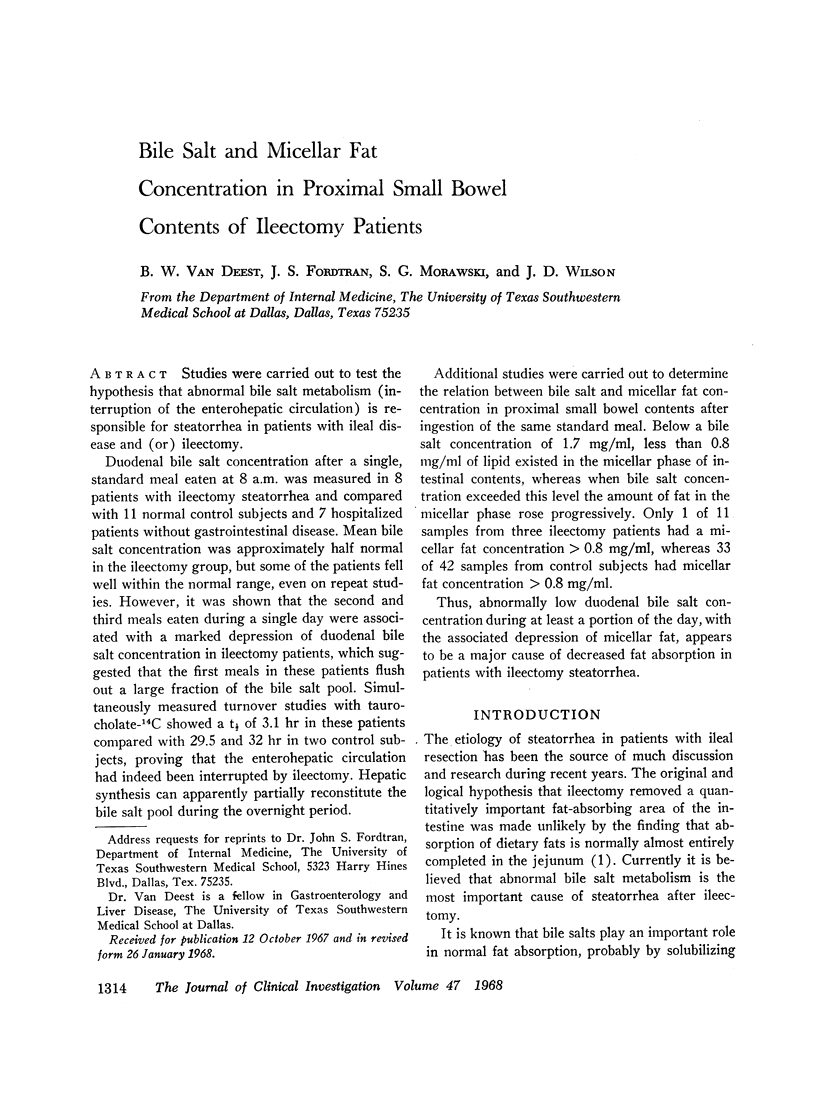

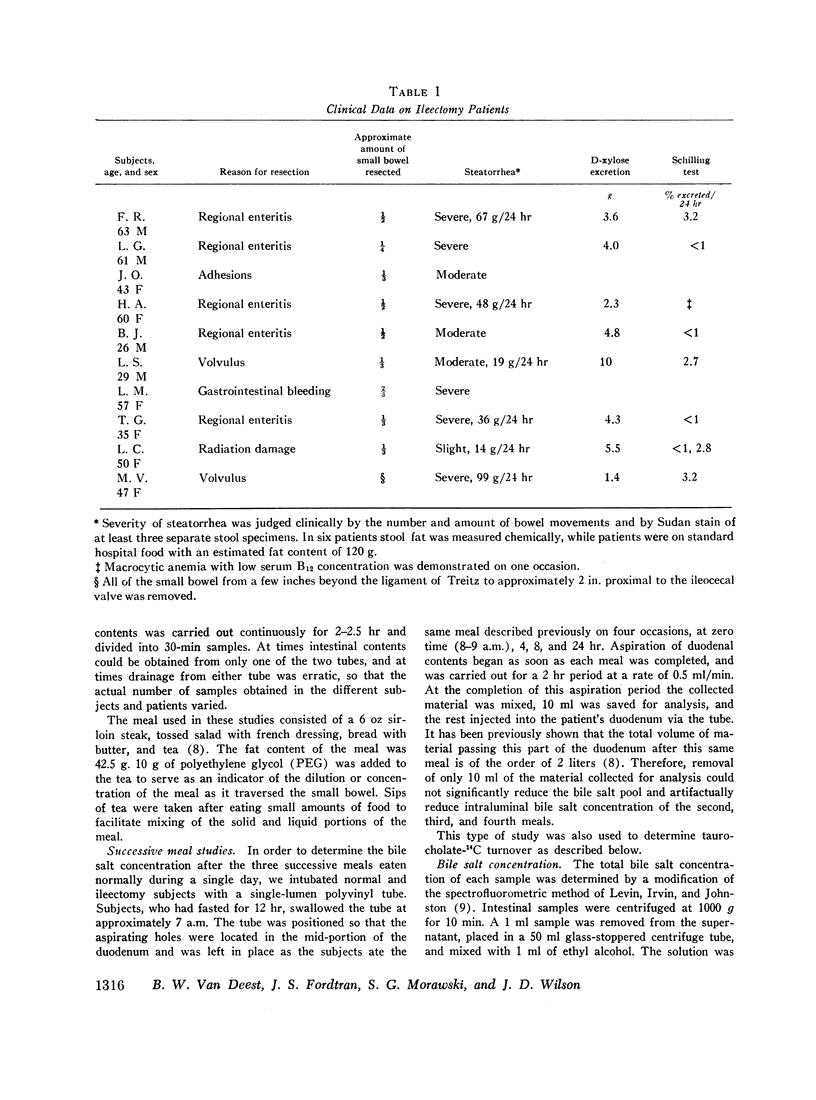
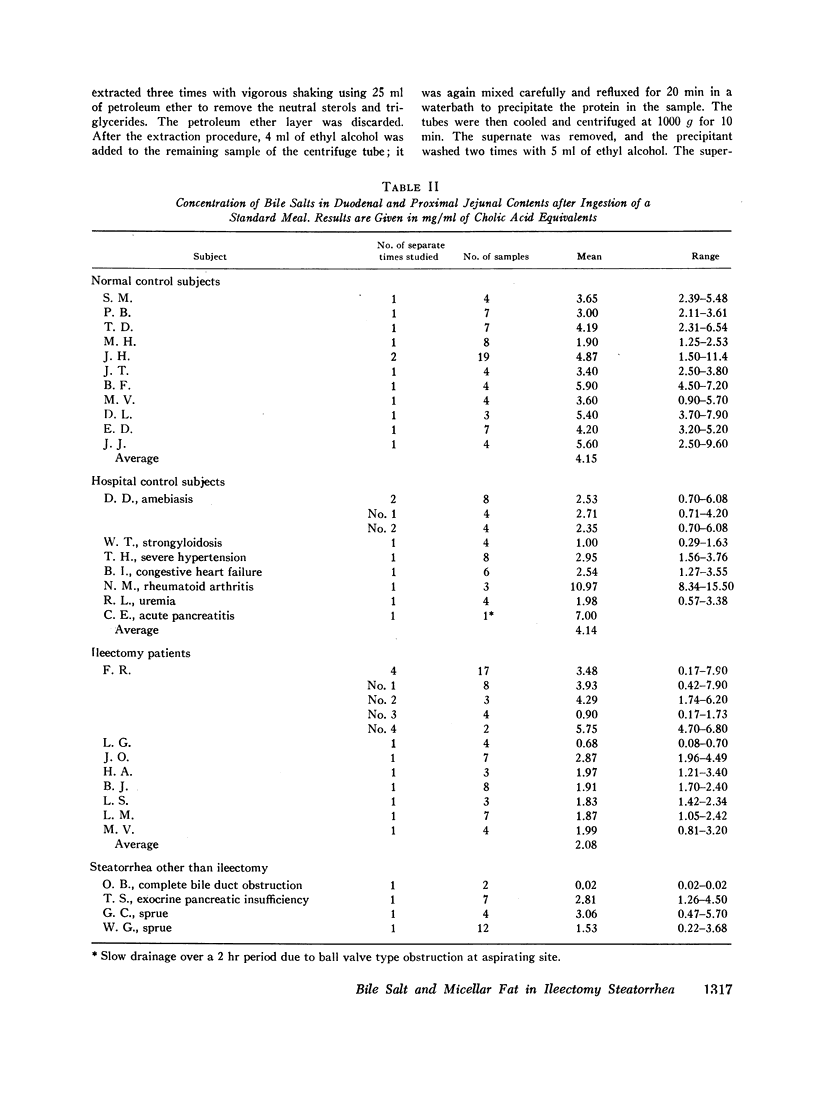
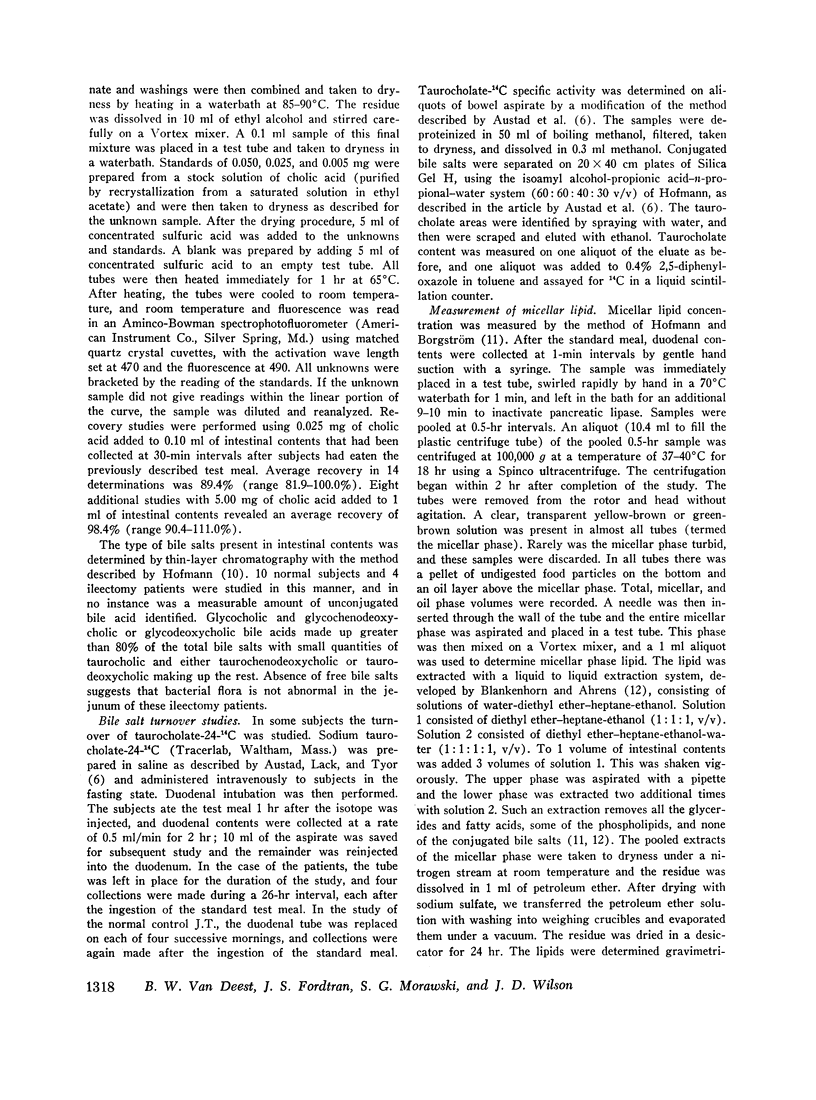
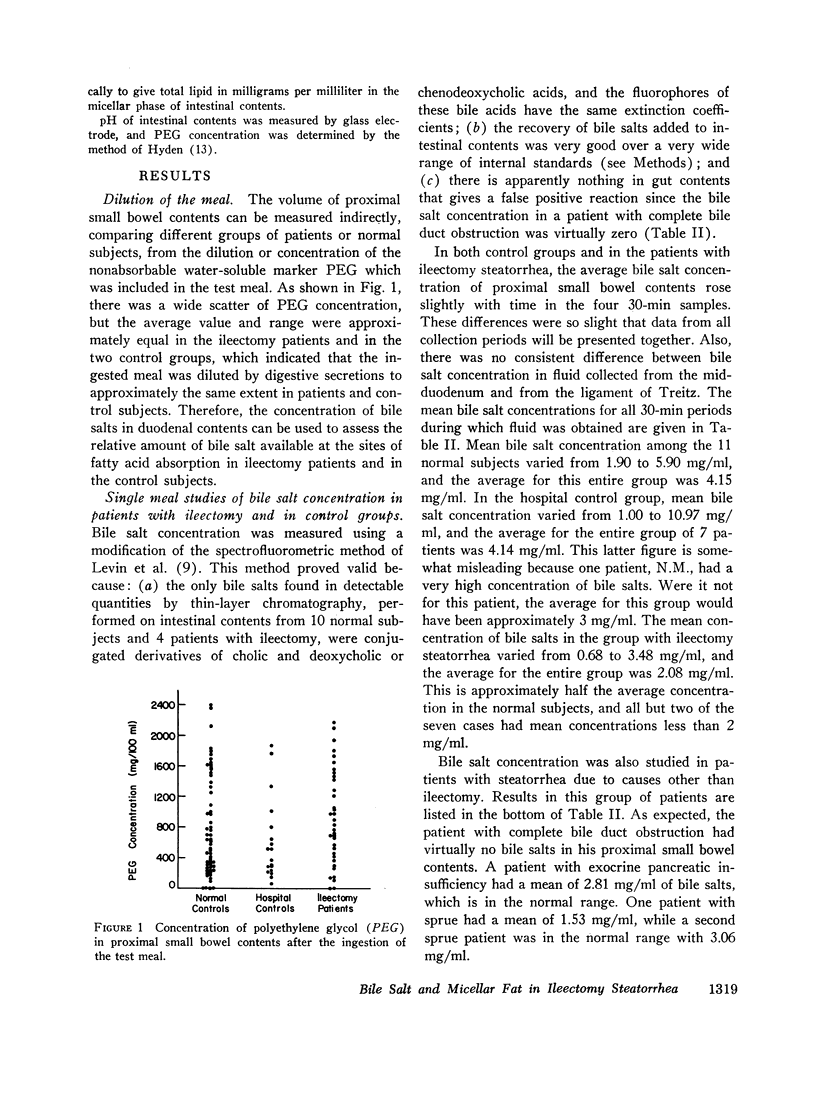
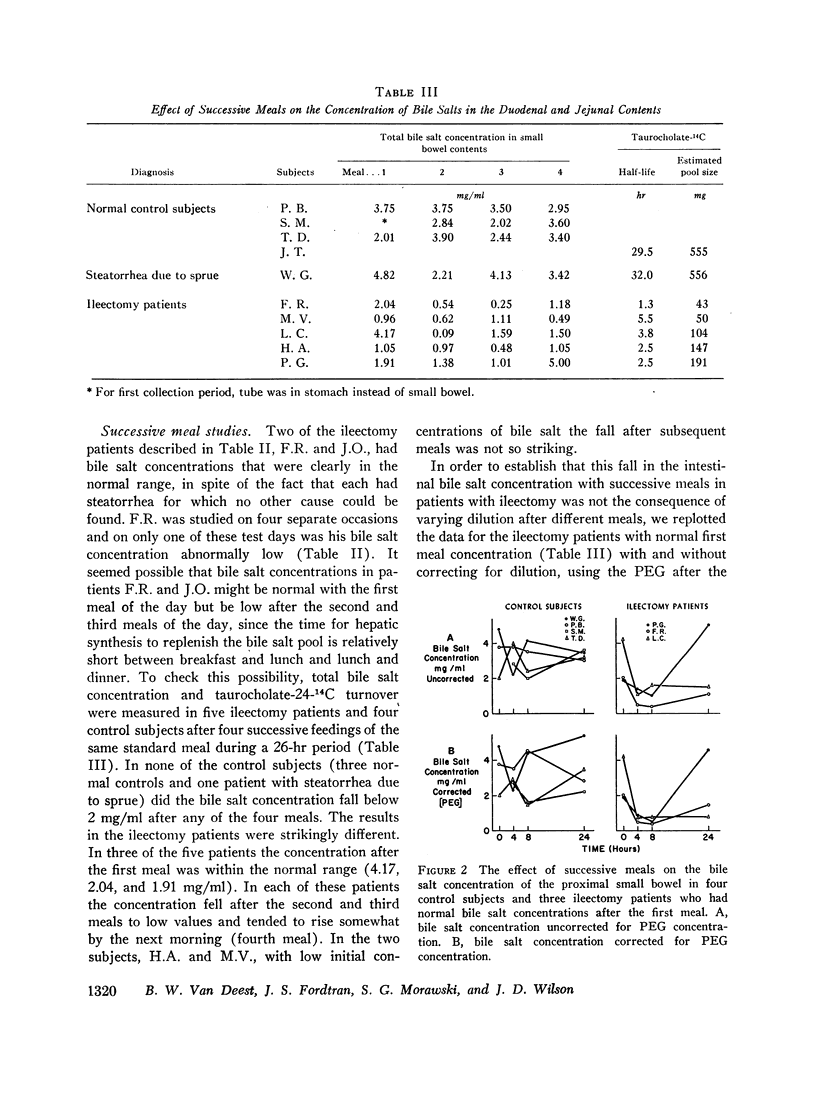
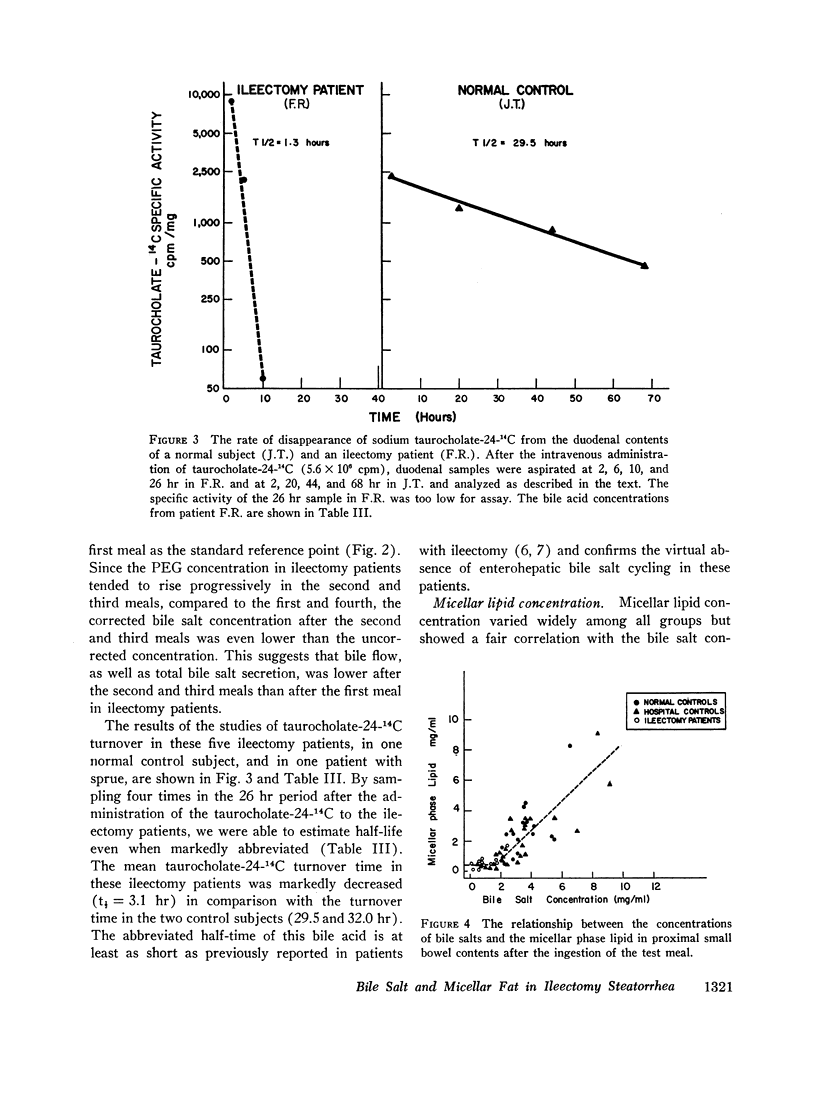
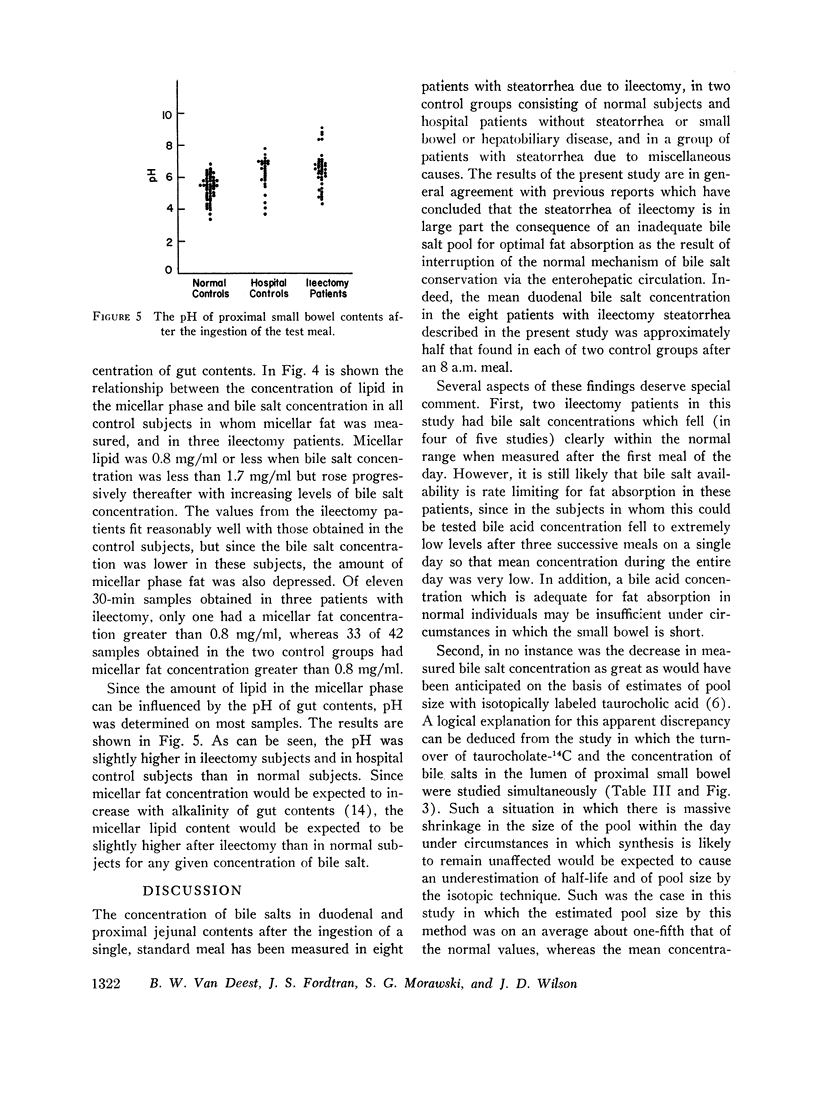
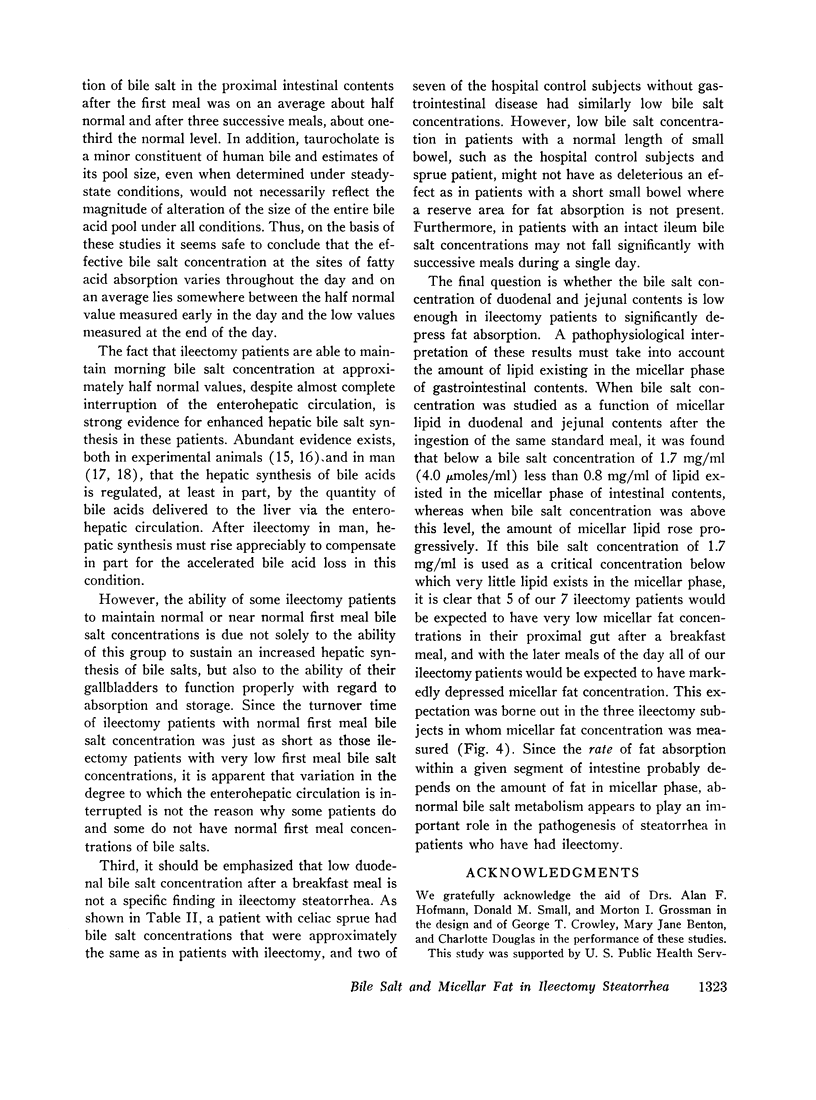
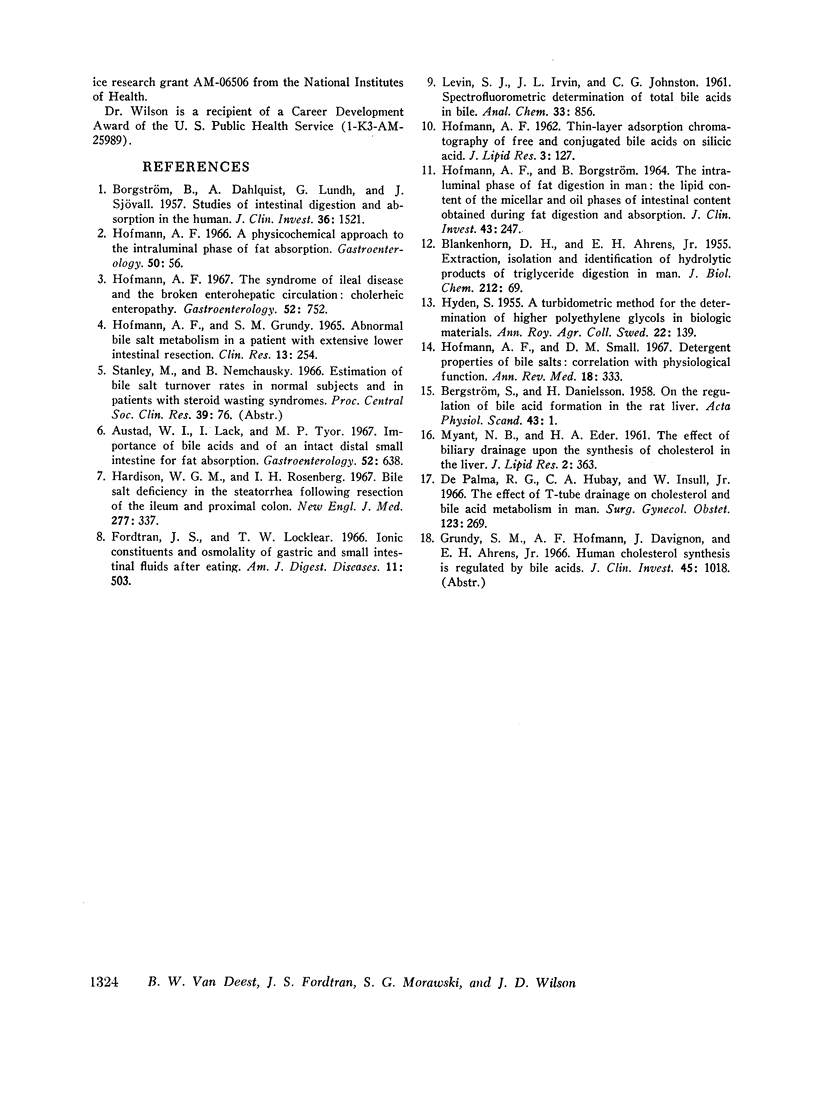
Selected References
These references are in PubMed. This may not be the complete list of references from this article.
- Austad W. I., Lack L., Tyor M. P. Importance of bile acids and of an intact distal small intestine for fat absorption. Gastroenterology. 1967 Apr;52(4):638–646. [PubMed] [Google Scholar]
- BERGSTROM S., DANIELSSON H. On the regulation of bile acid formation in the rat liver. Acta Physiol Scand. 1958 Jul 17;43(1):1–7. doi: 10.1111/j.1748-1716.1958.tb01572.x. [DOI] [PubMed] [Google Scholar]
- BLANKENHORN D. H., AHRENS E. H., Jr Extraction, isolation, and identification of hydrolytic products of triglyceride digestion in man. J Biol Chem. 1955 Jan;212(1):69–81. [PubMed] [Google Scholar]
- BORGSTROM B., DAHLQVIST A., LUNDH G., SJOVALL J. Studies of intestinal digestion and absorption in the human. J Clin Invest. 1957 Oct;36(10):1521–1536. doi: 10.1172/JCI103549. [DOI] [PMC free article] [PubMed] [Google Scholar]
- De Palma R. G., Hubay C. A., Insull W., Jr The effect of t-tube drainage on cholesterol and bile acid metabolism in man. Surg Gynecol Obstet. 1966 Aug;123(2):269–273. [PubMed] [Google Scholar]
- Fordtran J. S., Locklear T. W. Ionic constituents and osmolality of gastric and small-intestinal fluids after eating. Am J Dig Dis. 1966 Jul;11(7):503–521. doi: 10.1007/BF02233563. [DOI] [PubMed] [Google Scholar]
- HOFMANN A. F., BORGSTROEM B. THE INTRALUMINAL PHASE OF FAT DIGESTION IN MAN: THE LIPID CONTENT OF THE MICELLAR AND OIL PHASES OF INTESTINAL CONTENT OBTAINED DURING FAT DIGESTION AND ABSORPTION. J Clin Invest. 1964 Feb;43:247–257. doi: 10.1172/JCI104909. [DOI] [PMC free article] [PubMed] [Google Scholar]
- Hardison W. G., Rosenberg I. H. Bile-salt deficiency in the steatorrhea following resection of the ileum and proximal colon. N Engl J Med. 1967 Aug 17;277(7):337–342. doi: 10.1056/NEJM196708172770704. [DOI] [PubMed] [Google Scholar]
- Hofmann A. F. A physicochemical approach to the intraluminal phase of fat absorption. Gastroenterology. 1966 Jan;50(1):56–64. [PubMed] [Google Scholar]
- Hofmann A. F., Small D. M. Detergent properties of bile salts: correlation with physiological function. Annu Rev Med. 1967;18:333–376. doi: 10.1146/annurev.me.18.020167.002001. [DOI] [PubMed] [Google Scholar]
- Hofmann A. F. The syndrome of ileal disease and the broken enterohepatic circulation: cholerheic enteropathy. Gastroenterology. 1967 Apr;52(4):752–757. [PubMed] [Google Scholar]


